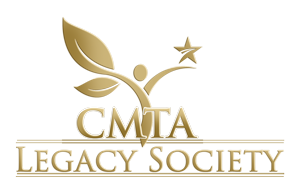Unidentified Type 2 CMT

While researchers have identified more than 90 mutated genes that cause CMT, approximately 50 percent of CMT2 patients do not yet have a definitive genetic diagnosis. Dr. Stephan Züchner at the University of Miami is working to change that, spearheading an ambitious project to identify new disease-causing mutations in patients seen in the Inherited Neuropathy Consortium (INC). The INC is an integrated group of academic medical centers, patient support organizations, and clinical research resources dedicated to conducting clinical research in different forms of CMT and improving the care of patients. Funded primarily by the National Institutes of Health (NIH) with supplemental funding from the Charcot-Marie-Tooth Association and the Muscular Dystrophy Association, the INC plays a key role in developing the infrastructure necessary to evaluate CMT therapies.
PROJECT GOAL: DEVELOPMENT OF ADVANCED RESEARCH DIAGNOSTIC CAPABILITIES FOR THE CMT COMMUNITY
Grant Amount: $358,123
Principal Investigator: Dr. Stephan Züchner, University of Miami

Specific Aim 1. To share data, curate existing data, and develop a web-based access for CMT patients to genomic studies. We will continue to systematically archive, filling missing data fields, and other improvements. We will use the data in the GENESIS database to generate a high quality CMT dataset for ongoing and future gene discovery and statistical studies of the disease. Importantly, we have received IRB and technical approval for a web-based recruitment of CMT patients into genomic research studies. We will begin to recruit patients through this portal, which will be complementary to INC efforts and allows the researchers and patients alike to gain experience with this new technology.
Specific Aim 2. Implementing and validating a machine learning algorithm for CMT genetic variation. We will implement a novel machine learning algorithm to all variants and train a neural network with available variation from ClinVar and gnomAD, as well as in house detected changes. This will allow for more automatic determination of pathogenic variants and enhance variant prioritization, especially for CMT patients not yet diagnosed.
Specific Aim 3. Improving genetic annotation in GENESIS. Advanced and detailed up to date annotation is a key element to prioritize and filter variation CMT exomes and genomes. The ever-updated sources of such annotation include, gnomAD, SpiiceAl, local constrained scores, ancestry specific alleles and measurements.
Specific Aim 4. Implementing repeat expansion detection in CMT and advanced structural variant detection. The recent discovery of a non-coding tandem repeat expansions (TR) in RFCl in CANVAS underlined the possibility of TRE contributing in significant ways to CMT. With new tools available we have recently shown in large control sets how modern bioinformatics can detect TR from a single WGS dataset ^. This will be applied to all WGS CMT cases not yet resolved for a causative gene.
Dr. Züchner’s study, designated as Project #6602 by the Inherited Neuropathy Consortium (INC), is an ongoing study currently in its tenth year to identify new causes of CMT for those who cannot find the genetic cause of their CMT with tests that are currently available.
Individuals who have already been seen at one of the INC sites who are eligible for this project have probably already been enrolled, but they can contact their INC site directly if they have questions about participation. As a new patient, to be eligible for this project, you first need to contact one of the INC locations to be evaluated and enroll in the INC Natural History Study (Project #6601). This will involve being seen in person at one of the INC’s sites.
To learn how to enroll in Project #6601, please visit www.rarediseasesnetwork.org/cms/inc/6601.
Once you’ve participated in Project #6601, you may proceed with Project #6602. Instructions for enrolling in Project #6602 can be found here: www.rarediseasesnetwork.org/cms/inc/6602.
Read about the Patients as Partners in Research Initiative ⟶





